The 17th century was a period of great scientific achievement, sometimes referred to as “the century of genius.” The earliest prototype that has survived is that of the French scientist Blaise Pascal (1923-1662), who built a mechanical calculator in 1642, when he was only 19. His machine used mechanical gears and was powered by hand – a person could enter numbers up to eight digits long using dials and then turn a crank to either add or subtract.
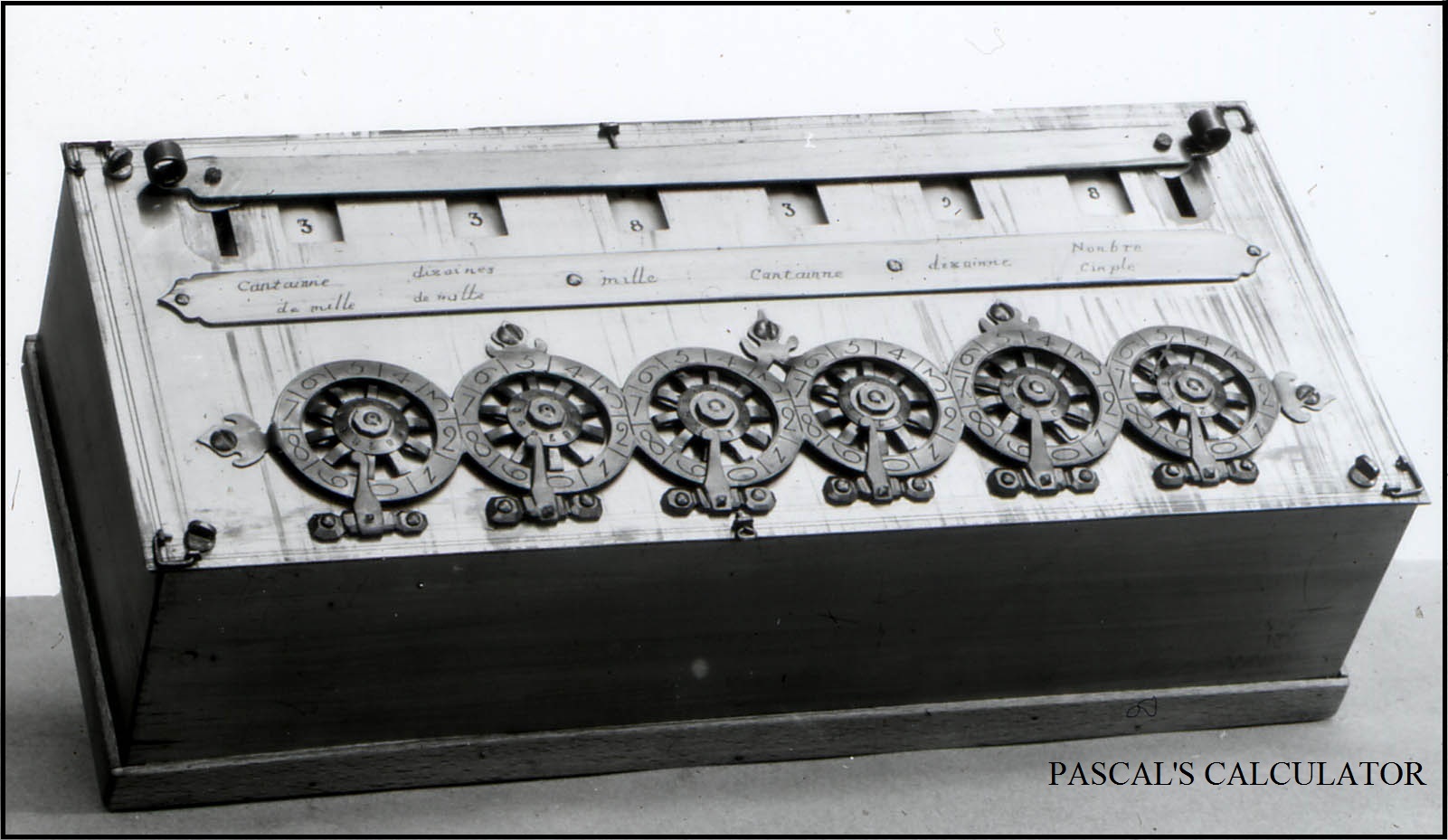
Fig 1 Pascal's Calculator. A person entered digits by turning the wheels along the bottom, turned a crank, and viewed the results of calculations in the windows along the top.
Although mechanical calculators grew in popularity during the 1800s, the first programmable machine was not a calculator at all, but a loom. Around 1801, Frenchman Joseph-Marie Jacquard (1752-1834) invented a programmable loom in which removable punch cards were used to represent patterns. Before Jacquard designed this loom, producing tapestries and patterned fabric was complex and tedious work because loom operators had to manually weave different threads over and under the cross-threads to produce the desired effect.
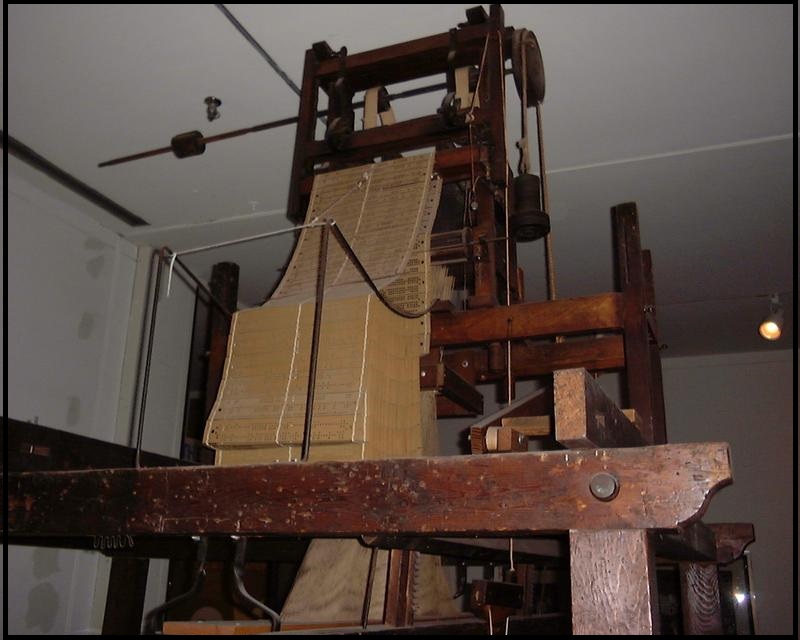
Fig 2 Jacquard's loom. A string of punch cards for controlling the weave pattern is shown to the left, feeding into the top of the loom.
Approximately twenty years later, Jacquard’s idea of storing information as holes punched into cards resurfaced in the work of English mathematician Charles Babbage (1791-1871). Babbage incorporated punch cards in the 1821 design of his Difference Engine, a steam-powered mechanical calculator for solving mathematical equations (Fig. 3 Difference Engine). Due to limitations in manufacturing technology, Babbage was never able to construct a fully functional model of the Difference Engine. In 1833, Babbage expanded on his plans for the Difference Engine to build a more powerful machine that included many of the features of modern computers. He envisioned this machine, which he called the Analytical Engine, as a general-purpose, programmable computer that accepted input via punched cards and printed output on paper. Like modern computers, the Analytical Engine was to encompass various integrated components, including a readable/writeable memory (which Babbage called the store) for holding data and programs and a control unit (which he called the mill) for fetching and executing instructions.
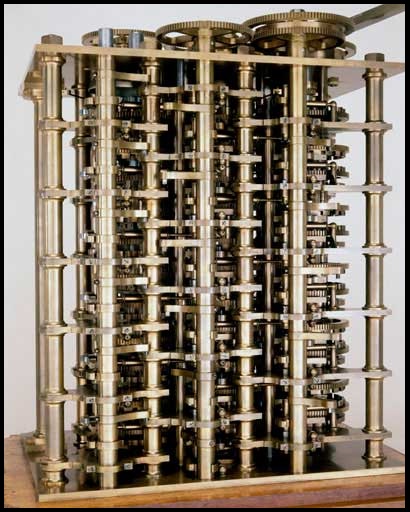
Fig 3 Babbage's Difference Engine, with interlocking gears and numbered wheels visible.
Although a working model of the Analytical Engine was never completed, its innovative and visionary design was popularized by the writings and patronage of Augusta Ada Byron, Countess of Lovelace (1815-1852). Ada Byron’s extensive notes on the Analytical Engine included step-by-step instructions to be carried out by the machine; this contribution has since led the computing industry to recognize her as the world’s first programmer.
During the late 19th century, the use of punch cards resurfaced yet again in a tabulating machine invented by Herman Hollerith (1860-1929). Herman’s machine was designed to sort and tabulate data for the U.S. census, employing punch cards to encode census data. Each hole on a card represented a specific piece of information, such as a census respondent’s gender, age, or home state. The tabulating machine interpreted the patterns on the cards in much the same way that Jacquard’s loom read the thread patterns encoded on its cards. In Hollerith’s tabulating machine, metal pegs passed through holes in the cards and made an electrical connection with a metal plate below. The machine sensed these electrical connections and used them to sort and calculate data (Fig. 4 Hollerith tabulating machine).
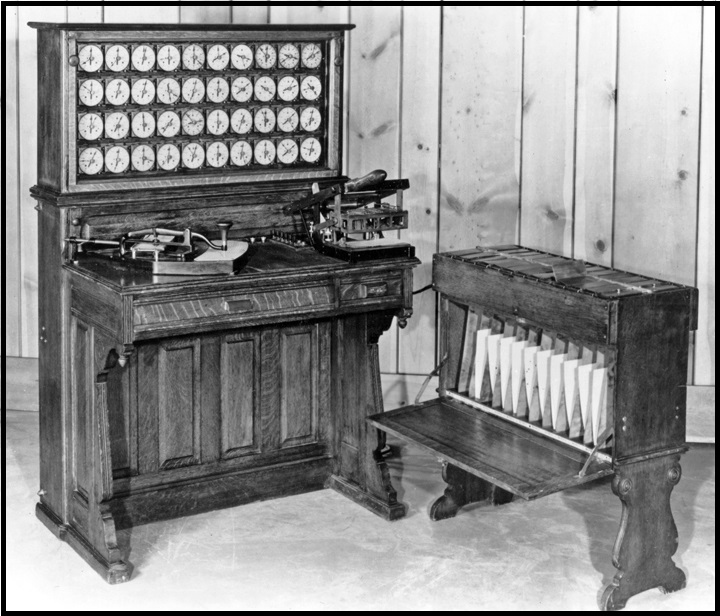
Fig 4 Hollerith's tabulating machine. The operator could select desired characteristics (e.g.,age, gender, income) by turning the dials on the console and feeding punch cards through the mechanism on the desktop. Cards were then sorted based on those characteristics into slots on the right.
In the early 1940s, Harvard University’s Howard Aiken (1900-1973) rediscovered Babbage’s designs and applied some of Babbage’s ideas to modern technology; Aiken’s work culminated in the construction of the Mark I computer in 1944 which was the first electronic computer using relays. An electromagnetic relay, a mechanical switch that can be used to control the flow of electricity through a wire, consists of a magnet attached to a metal arm (Fig. 5 electromagnetic relay). The Mark I computer could perform a series of mathematical operations, but its computational capabilities were limited to addition, subtraction, multiplication, division, and various trigonometric functions. Nevertheless, the Mark I represented a major advance in that it could complete calculations approximately 100 times faster than could existing technology of the time.
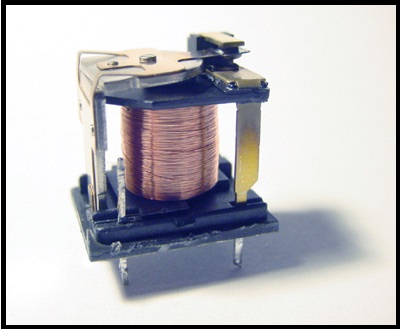
Fig 5 Electromagnetic Relay. When an electrical current is applied to the wire at the bottom, the metal coil to the left generates a magnetic field. The magnetic attraction pulls the armature on the right, closing the switch and allowing electricity to flow through thr relay.
Although electromagnetic relays certainly function much faster than wheels and gears can, relay- based computing still required the opening and closing of mechanical switches. Relays also posed reliability problems, since they had a tendency to jam. It was during the mid-1940s that computer designers began to replace electromagnetic relays with vacuum tubes, small glass tubes from which all or most of the gas has been removed, permitting electrons to move with minimal interference from gas molecules (Fig. 6 vacuum tube). Since vacuum tubes have no moving parts (only the electrons move), they enable the switching of electrical signals at speeds far exceeding those of relays.
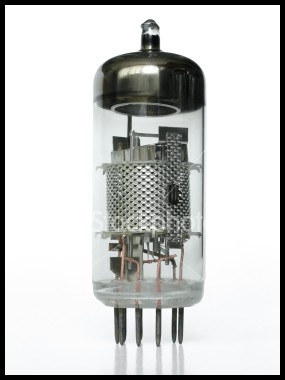
Fig 6 Vacuum tube. A filament inside the tube controls the flow of electricity- when a current is applied to the filament, electrons are released to bridge the vacuum and allow electrical current to flow through the tube.
In the United States, John Mauchly (1907-1980) and J. Presper Eckert (1919-1995) were building an electronic computer called ENIAC (Electronic Numerical Integrator And Computer) at the University of Pennsylvania (Fig. 7 ENIAC). The ENIAC was designed to compute ballistics tables for the U.S. Army, but it was not completed until 1946. The machine consisted of 18,000 vacuum tubes and 1,500 relays, weighed 30 tons, and required 140 kilowatts of power.
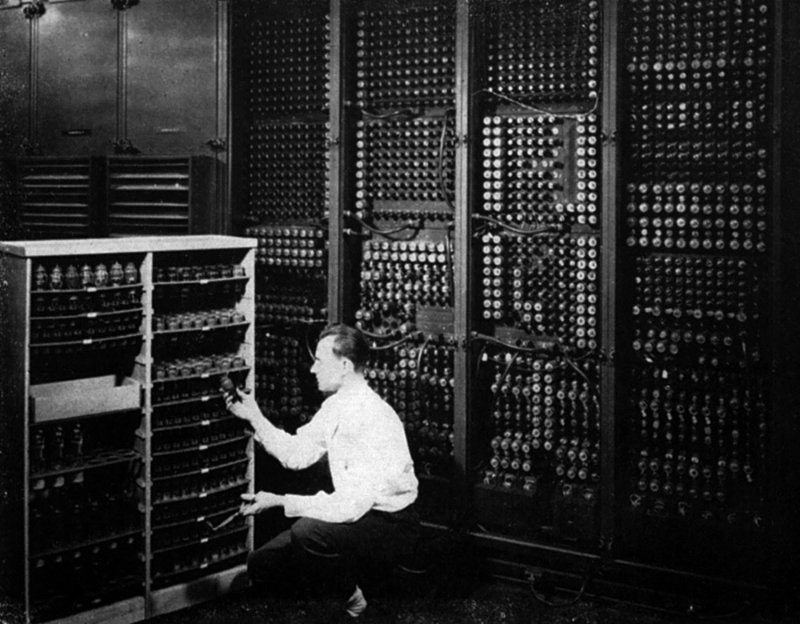
Fig 7 ENIAC, with some of its 18,000 vacuum tubes visible.
The ENIAC could only store 20 numbers in memory, whereas the Mark I could store 72. On the other hand, the ENIAC could perform more complex calculations then the Mark I could and operated up to 500 times faster (the ENIAC could complete 5,000 additions per second). Another advantage of the ENIAC was that it was programmable, meaning that it could be reconfigured to perform different computations.
Among the scientists involved in the ENIAC project was John von Neumann (1903-1957), who is considered to be one of computer science’s founding fathers. Von Neumann recognized that programming via switches and cables was tedious and error prone. Therefore, he designed an alternative computer architecture in which programs could be stored in memory along with data. Von Neumann also introduced the use of binary (base 2) representation in memory, which provided many advantages over decimal (base 10) representation. Before von Neumann, computers were not so much programmed as they were wired to perform a specific task. However, through the von Neumann architecture, a program could be read in (via cards or tapes) and stored in the computer’s memory (Fig 8 Von Neumann).
Fig 8 John von Nuemann.
As computing technology evolved throughout the early 1950s, the disadvantages of vacuum tubes became more apparent. The next major advance in computer technology was the replacement of vacuum tubes with transistors. Invented by John Bardeen (1908-1991), Walter Brattain (1902-1987), and William Shockley (1910-1989) in 1948, a transistor is a piece of silicon whose conductivity can be turned on and off using an electric current (Fig. 9 transistor). Transistors were much smaller, cheaper, more reliable, and more energy efficient than vacuum tubes were. Thus, transistors’ introduction allowed computer designers to produce smaller, faster machines at a drastically lower cost. Transistors were considered to be the most important technological development of the 20th century.

Fig 9 Transistor.
The early 1950s also marked the emergence of the commercial computer industry. Eckert and Mauchly left the University of Pennsylvania to form their own company and, in 1951, the Eckert-Mauchly Computer Corporation began selling the UNIVAC I computer (Fig 10). The UNIVAC was the first commercially available computer. Several other companies soon joined Eckert-Mauchly and began to market computers commercially. During this time, International Business Machines (IBM) was a small company producing card punches and mechanical card-sorting machines.
Fig 10 UNIVAC.
CONTENTS